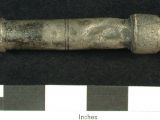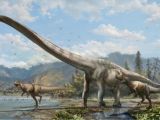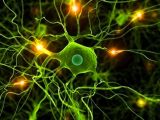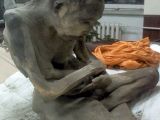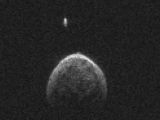Not to play Captain Obvious or anything of the sorts, but it must be said that it’s Sunday again. That’s right, we’ve officially made it through another workweek. Yes, you may now jump up and down with joy at the thought of your summer vacation, seeing how you’re one teeny tiny step closer to it.
Since it’s Sunday, it’s time to once again take the time to review the week’s most important and absolute best news from the world of science. Otherwise put, sit back, relax, pour yourself a cup of tea or a glass of wine, whatever appeals to you more, and enjoy another weekly round-up.
10. Fin whales found to hear with their skulls
A new study found that fin whales use not just their ears to zoom in on sounds in their environment but also their skulls. That’s right, a fin whale’s skull does not only serve to protect its brain but it also helps the marine mammal hear.
Wildlife researchers say that, when exposed to sound waves, the skull of a fin whale begins to ever so slightly vibrate. In doing so, it amplifies the sound waves and helps carry them to the animal’s ears. As a result, the marine mammal has an easier time processing them.
The scientists behind this investigation believe that it is possible that other baleen species also rely on their skulls to hear. They go on to argue that, in time, their discovery could pave the way for a better protection for such marine dwellers against man-made noise pollution.
9. Stomach acid used to power miniature motors
This week, researchers announced that, in a series of experiments, they used stomach acid to power a fleet of miniature motors. Thus, the scientists who developed these so-called micromotors say that, once set loose inside the guts of several laboratory mice, their gizmos started moving on their own.
The reason the miniature motors began moving after being released in the stomach of the rodents was that, as soon as they were exposed to the animals’ digestive juices, the zinc included in their makeup birthed teeny tiny hydrogen bubbles that served to propel them.
The scientists who conducted these experiments imagine that, at some point in the future, it might be possible to use micromotors like the ones they developed to treat various conditions by delivering drugs straight to a suffering organ, maybe even tumors that are otherwise difficult to reach.
8. Medical equipment recovered from Pirate Blackbeard’s ship
This might come as a bit of a surprise to some people, but as it turns out, Pirate Blackbeard was very much preoccupied with the wellbeing of his fellow plunderers. So much so that he had surgeons look after them and make sure that they were always in top shape.
Hence the fact that, while exploring the remains of Pirate Blackbeard’s ship, Queen Anne’s Revenge, underwater archaeologists recovered several jars that once served to hold medicine, a syringe and even special pumps that researchers say were used to deliver medical concoctions into the rectum.
In case anyone was wondering, Queen Anne’s Revenge sunk in 1718, just a few months before Pirate Blackbeard was killed in battle. The ship’s remains now rest in the waters off the coast of North Carolina, US. The vessel was discovered in 1996 and archaeologists have been exploring it ever since.
7. NASA released the sharpest image yet of dwarf planet Ceres
NASA’s Dawn spacecraft, launched back in September 2007, is now en route to dwarf planet Ceres, a celestial body circling the Sun between the orbits of Mars and Jupiter. Should all go well, the probe will reach Ceres later this year, on March 6.
Scientists with NASA promise that, as it moves closer to its target, the probe will obtain even clearer images of it. These images, together with the data Dawn is expected to obtain while orbiting Ceres, will help astronomers better understand the dwarf planet’s anatomy.
6. Bizarre dinosaurs had freakishly long necks
Some time ago, in 2006, construction workers in China chanced to come across a fairly impressive collection of fossilized bones. When they finally got around to examining them, paleontologists found that the bones belonged to a previously undocumented dinosaur species.
This newly discovered species, which now goes by the name of Qijianglong, roamed the Earth about 160 million years ago, during the Late Jurassic. What’s interesting is that, when compared to other ancient beasts, these dinosaurs had a rather odd anatomy.
Thus, it is said that specimens belonging to this species could grow to measure about 15 meters (nearly 50 feet) from head to tail and had necks spanning about half their overall length. Size aside, the necks of these beasts were quite lightweight. This is because they comprised hollow vertebrae.
5. Stem cells used to grow three-dimensional brain tissue
In a report published this week, scientists detail how, using human embryonic stem cells, they managed to grow fully functional three-dimensional brain tissue in laboratory conditions. Apparently, Doctor Frankenstein is back, and this time, he’s all about that brain.
The researchers say that, having exposed the human embryonic stem cells that they experimented on to a controlled environment, they successfully grew a three-dimensional structure resembling the human cerebellum in just 35 days. Weeks later, the structure was responsive to stimuli.
It is expected that, one day in the not-too-distant future, living structures like the one created by this team of researchers could help specialists gain a better understanding of various neurological disorders. Similar structures might even be implanted into patients.
4. Swiss cheese-like exploded star imaged in detail
Using data obtained with the help of the Mayall telescope at the Kitt Peak National Observatory in Arizona, US, astronomers managed to image an exploded star dubbed Cassiopeia A in unprecedented detail. Specifically, the scientists put together a three-dimensional model of this celestial body.
The model revealed that this exploded star kind of, sort of resembles Swiss cheese. Thus, they say that Cassiopeia A comprises several cavities, some of which measure 3 to 6 light-years in diameter. These cavities, about a dozen in number, are intertwined with clouds of debris.
For those unaware, Cassiopeia A sits at a distance of about 11,000 light-years from our planet. It formed about 340 years ago, when a massive star exploded in a supernova. It is estimated that the cloud of debris birthed by this explosion measures about 10 light-years across.
3. Mummified monk found in lotus position
Just days ago, the mummified body of a Buddhist monk was discovered in Mongolia. The body, a photo of which is included in the gallery below, was discovered in the country’s Songinokhairkhan province. It is estimated to be about 200 years old.
What’s interesting is that, when found, this mummified Buddhist monk was still resting in a lotus position. Besides, experts say that this is more likely the position in which he died. Unfortunately, it is unclear who the monk might be and how it was that he stayed frozen in a lotus pose after death.
Mind you, this monk was not the first to have until now been found mummified in a meditative position. On the contrary, several other such corpses have been discovered over the years. These other monks died in such a position after completing a long process of self-mummification.
2. Beer might help treat neurodegenerative diseases
Having carried out a series of experiments in laboratory conditions, a team of researchers found that a compound in beer is a surprisingly powerful antioxidant that can help protect brain cells against oxidative damage. Hence, it is argued that the compound could treat neurodegenerative disorders.
The compound in question goes by the name of xanthohumol. The reason scientists believe that it could help slow the progress of neurodegenerative diseases like Alzheimer’s and Parkinson’s is that these diseases were previously shown to correlate with oxidative damage.
Before you start wondering just how weird it would be to use this compound that is naturally occurring in beer to treat brain conditions, you should know that other studies have shown that xanthohumol can also benefit the cardiovascular system and even fight cancer.
1. Asteroid that visited us on January 26 found to have its own moon
On January 26, an asteroid measuring about 1,100 feet (325 meters) across at its widest point flew by Earth. Specifically, astronomers say that this space rock, dubbed 2004 BL86, came within 745,000 miles (approximately 1.2 million kilometers) of our planet.
Using NASA’s Deep Space Network antenna at Goldstone, California, astronomers managed to image the space rock as it buzzed by Earth. It was thus discovered that 2004 BL86 is not travelling through the cosmos alone. On the contrary, this space rock has a moon of its own.
It is understood that this moon that is now keeping 2004 BL86 company has a diameter of about 230 feet (70 meters). Hopefully, astronomers will manage to have a closer look at it a couple of centuries from now, when its parent space rock will once again fly by our planet.
This most exciting piece of news concludes our latest weekly round-up. If you’re one of those guys or gals who like to keep tabs on what scientists are up to these days, be sure to check this page again next Sunday.
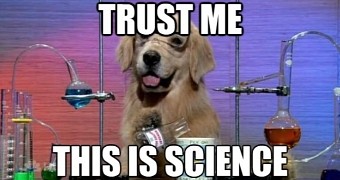
 14 DAY TRIAL //
14 DAY TRIAL // 


